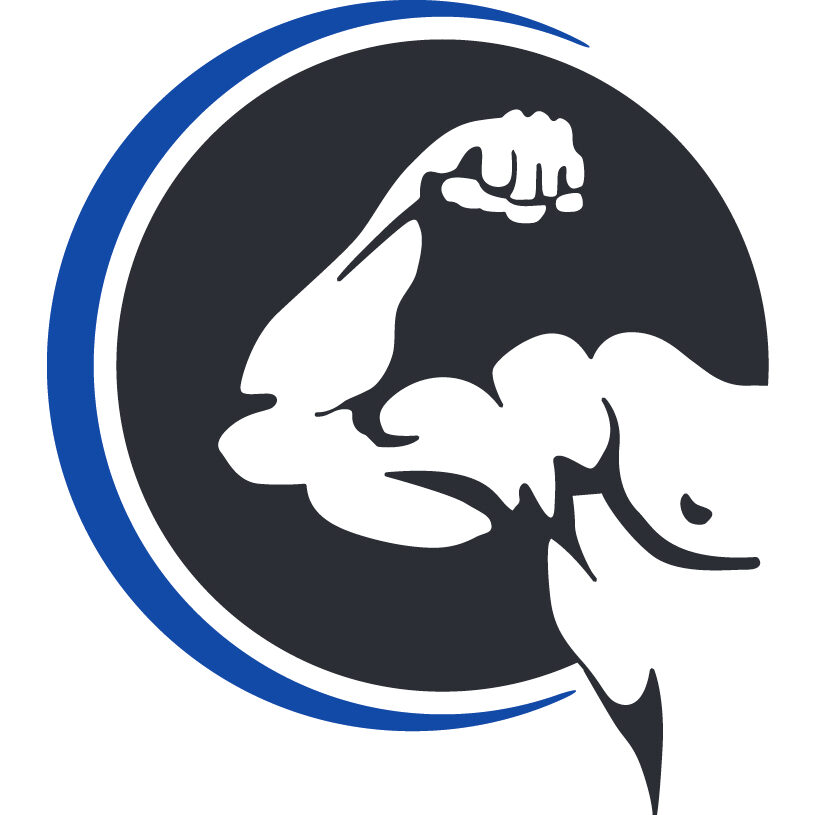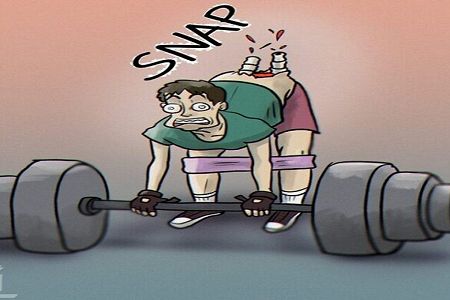Have you ever seen someone at the gym who’s clearly bitten off more than they can chew? That’s ego lifting. It’s when an individual attempts to lift weights that are way beyond their capability, focusing more on impressing others than on proper form and safety. Picture this: a guy walks up to the dumbbell rack, picks up a pair of 90-pounders, and starts rocking back and forth, trying to curl them. He’s struggling – maybe he completes the lift, maybe not – but either way, he’s usually met with sidelong glances or outright eye rolls.
I’m here to shed light on this hazardous practice, and I speak from experience. I used to be that guy—eighteen, nineteen, over at the local YMCA with my dad, pushing weights I had no business pushing. The memory is vivid: slapping 225 pounds onto a bench press, hoisting it off the rack, and getting it down… but not back up without help. Back then, I was so set on the idea of lifting heavy, I lost sight of the right way to lift.
This isn’t just about avoiding embarrassing gym moments; it’s also about safety. More often than not, ego lifting leads to injury. Still skeptical? A quick search for ego lifters on YouTube will serve up a smorgasbord of cautionary tales. All the grunt and clatter boiled down to a simple maxim I learned the hard way: I would rather do a lighter weight and do it right, than use a heavier weight and do it wrong. Proper technique isn’t just for show—it’s the foundation of effective strength training.
The Psychology Behind Ego Lifting: Understanding the Why
You’re about to find out why some gym-goers end up ego lifting, even at the risk of their own health. It’s not simply about showing off; it’s often much deeper. First off, the desire to lift heavy can be traced back to an innate competitive spirit. For many, the gym is a stage, and lifting the heaviest weights becomes a performance to garner respect or admiration from peers.
I’m going to explore the mental trap of associating strength with heavy weights exclusively. This mindset leads to the false belief that lifting heavier equals faster progress and bigger gains, which simply isn’t true.
Then there’s the issue of gym intimidation. Especially for new lifters, seeing others handle massive weights can create an invisible pressure to keep up. Social media, with its constant stream of fitness achievements, can amplify this feeling, encouraging lifters to bypass the foundational steps of strength training.
I’ve seen it firsthand, and maybe you have too; someone stacking on plates beyond their capability, motivated by an inner voice that equates heavier lifting with personal worth or success. It’s not just about proving something to others, but also about satisfying a deep-seated need to feel strong or capable.
In my opinion, and backed by many fitness professionals, overcoming the psychological aspects of ego lifting is crucial. It requires a shift in focus from external validation to internal progress and a commitment to respecting your body’s limits. Understanding why we gravitate towards ego lifting is the first step in preventing it.
The Dangers of Ego Lifting: When Pride Overpowers Prudence
Let me paint you a picture: you’ve seen someone at the gym, veins bulging, face contorted, and muscling up a weight with everything they’ve got. It’s called ego lifting, and while it may look impressive to some, the real picture isn’t so pretty. More often than not, ego lifting can be a quick ticket to injury town. I’m talking strains, sprains, and the much-dreaded ‘pop’ that means it’s going to be a while before you even think about lifting again.
The risk isn’t just to muscles and ligaments, either. Bad lifting techniques can wreak havoc on your joints, too – shoulders, knees, and the back are often the unwilling victims. And it’s not always the heavy, showy exercises that get you – even simple moves done wrong under too much weight can cause damage. But it’s not just physical harm we need to be aware of – ego lifting is also a fast track to getting discouraged and burning out.
In my own journey, I remember trying to conquer a personal Everest: bench pressing 225 pounds. With plates gleaming on both sides, I lifted the bar off the rack, convinced that today would be my day. Down the bar went easily enough, but getting it back up? Yeah, that was a different story. That weight I had no business attempting to lift clung to my chest like a stubborn child. And, as with so many ego lifting stories, I too had to endure the walk of shame and ask for help to re-rack. It wasn’t just my muscles that felt the strain; my ego was bruised, and the lesson learned that day stuck with me. I realized that lifting isn’t a number game – it’s a blend of consistency, technique, and building strength responsibly.
Getting stronger should be a progressive journey, not a mad dash. I’m throwing a flag on the play and calling into question the ‘go heavy or go home’ mantra. Play the long game. Lift smart, increase weight gradually, and live to lift another day. Think about it: what’s the point of proving yourself with a one-time heavy lift if you’re out of commission for weeks or months after?
Technique Over Tonnage: The Importance of Proper Lifting
You might think that hoisting massive weights is the key to making impressive gains, but here’s the deal: technique is king. Good form not just keeps you safe; it actually powers your progress in the long run. Now, why is it so crucial?
When you lift with proper technique, you engage the intended muscles accurately. That’s right, each exercise is designed to target specific muscle groups. If you’re curling those dumbbells with your back instead of your biceps, guess what? You’re missing the point, and you’re inviting injury.
So, what do the experts say? Well, they’re all about that perfect form. Practiced professionals emphasize the importance of starting with lighter weights and mastering the move. Once you’ve nailed the technique, gradually increasing the load is the way to go. It’s about building strength the smart way.
How can you tell if you’re overdoing it? Here are some red flags: If the only way you can complete a move is by swinging the weight, contorting your body, or recruiting momentum for assistance, it’s time to step back and reassess. Remember, if it doesn’t feel right, it probably isn’t.
In my opinion, you’d want to favor a lower weight that you can control smoothly throughout the entire range of motion. While it might feel like a step back, this approach actually sets you up for bigger victories ahead. Strong, injury-free muscles are the ultimate goal, and they come from lifting smart, not just heavy.
Reforming the Ego Lifter: A Journey of Self-Improvement
If you want to shed the ego lifting habit, it’s going to take some introspection and commitment. I’m here to help you with just that.
The first step is admitting there’s a problem. Just like I had to realize that lifting weights I had no business trying to lift wasn’t proving anything, except maybe a misguided determination.
Choose something that resonates with you—a goal, a mantra, or even a role model. Something that keeps you grounded in why you’re lifting and helps you focus on health over showmanship.
You can always adjust your approach down the road, but for now, start with lighter weights. I cannot stress enough how form should never be sacrificed for the sake of lifting heavier.
Now, accountability is key. Find a workout buddy or a trainer who isn’t afraid to call you out when they see your form slipping just to hoist up that extra poundage.
This is also about reeducating yourself on the basics of muscle growth and fitness. Muscle development isn’t just about lifting the heaviest weights but also about consistency, nutrition, and recovery.
I really hope that you understand that your journey to move away from ego lifting doesn’t end with you avoiding heavy weights forever. It’s about learning to lift the right way, for your body, for your goals.
In making these changes, you’re paving the way for a healthier lifting practice. That’s going to include developing a deep understanding of your own strengths and limitations—and pushing them, responsibly.
Ego Lifting in the Digital Age: Lessons from Online Fails
Guess what? Ego lifting isn’t something that happens in the shadows of your local gym—it’s all over the internet. YouTube is home to a myriad of videos showcasing lifters biting off more than they can chew. It’s both cringe-worthy and eye-opening.
In my opinion, there’s a silver lining to this trend of publicizing gym blunders. While it’s easy to watch these videos for entertainment, I see them as valuable teaching moments. The exaggerated arch of a back during a heavy squat or the perilous swing of a dumbbell curl gone wrong—they’re not just fails, they’re lessons in disguise.
Don’t believe me? Just type ‘ego lifting fails’ into your search bar, and prepare to be schooled. I urge you to watch with a critical eye. Notice the compromised form, the overzealous load, the hungry eyes for validation that often precede a painful-looking snap.
Now, here’s the point: It’s not about ridiculing these lifters. Instead, let’s learn from their overreach. This kind of content serves as a stark reminder of what NOT to do, helping us pave our own path to strength without succumbing to the hubris of ego lifting.
Reflecting on what can go wrong is a starting point for reforming lifting habits. By witnessing the immediate consequences that ego lifting can have on others, you’re provided with a strong visual incentive to maintain proper form and realistic goals in your own lifting journey.
Forging a Balanced Path: Ego Lifting vs. Mindful Strength Training
I’m going to round us off with a vital contrast: ego lifting versus mindful strength training. It’s not just about choosing lighter weights; it’s also about fostering an approach that resonates with you and your body’s capabilities.
You’re going to find out that there’s a lot of opportunity in shifting your focus to your form and the muscle groups you’re targeting. A lot is happening very quickly when you lift correctly, even if the weights aren’t breaking records.
That’s the strategy I like to leverage: gradual improvement and consistency. It’s not as flashy, but it sure is effective.
Your fitness journey, including strength training, doesn’t need to be dictated by the heaviest dumbbells you can hold for a split second. I would rather you choose something that challenges you yet allows for growth and progression without injury.
Don’t worry too much about the side-eye or what others are lifting. Mindful strength training is a learning curve. You can always adjust your approach down the road.
In my opinion, the benefits of avoiding ego lifting are clear. It sustains your health, enhances your progress, and guess what? It builds real strength—mental and physical.
I really hope that you take these insights, embrace mindfulness in your workouts, and commit to training smarter. After all, it’s your health and fitness journey, and it deserves to be taken seriously for the long haul.



